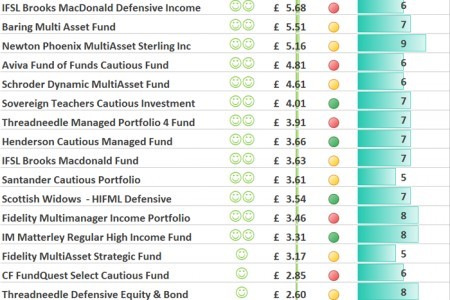Investment Risk Your Essential Guide to Investments and Risk
Post on: 26 Июнь, 2015 No Comment

When the subject of investment comes up, the subject of risk is never far behind. Read on to find out what risk is, and what you need to know about risk if youre planning to invest.
What is investment risk?
Put simply, risk is the possibility of losing some, or all, of the money you have invested. The outcome of your investment is uncertain. Conversely, if an investment is safe, then you are certain of getting back the original amount (the capital ) you put in.
What kinds of asset classes are the most risky?
There are four main investment asset types and these can be ranked according to their level of risk. Moving from low risk to high risk, the asset types are:
Cash, such as depositing your money in a bank or building society account, is the safest type of investment, and stocks and shares are the most risky.
Within each asset class there are also sub-categories. Bonds, for instance, are generally less risky than property or shares, but the level of risk depends on the particular type of bond you are investing in for example, gilts are generally seen as being safer than corporate bonds.
Similarly, although shares are the most risky type of investment, if you choose a collective investment fund that invests in a range of shares and is professionally managed, then your risk is less than if you invest directly in a single company.
If theres a risk, why invest?
The reason people are prepared to take a risk when they invest is that, in general, higher risk investments have a greater potential for gain, whereas lower risk investments tend to give a lower return. A bond may offer a return of just a few percent and this amount is fixed over a set period of time, whereas an investment fund offers the chance to earn a much higher return, depending on how the stock market is performing.
How much risk are you prepared to take?
Some people are naturally more cautious than others. For a lot of people, the possibility of losing some or all of their money is just too great a risk to take. Consider a scenario where your shares have just dropped in value by 25%. If this news would prompt you to rush out and sell them in a bid to cut your losses, then shares probably arent the right investment for you, but if you think youd be comfortable riding out such market fluctuations, then taking on a higher risk investment is something you could consider.
Remember, its your money, and you need to feel comfortable with any investment decision you make. Its also worth adding that our attitude to risk tends to change over time, as we grow older, or as our personal circumstances alter. A parent with three children to support is likely to have a different risk profile to someone who is single and has no dependants.
Risk and time: how long are you planning to invest for?
Once youve worked out how much risk youre prepared to take, you also need to establish how long youre prepared to invest for. Typically the higher risk investments, such as property, and stocks and shares, require you to invest for the long-term. Thats because historically shares have grown in value over the long term, but their value tends to fluctuate in the short term. Investment in shares is normally only recommended if youre looking to invest for more than five years, that way youre more likely to ride out any fluctuations.
Is there such a thing as a safe investment?
Inflation risk is a hidden threat to any investment, and while you could be lulled into a false sense of security as your bank balance quietly accrues interest, theres a possibility that in real terms you could be losing money. Thats because the rising cost of living means £100 will buy you less in ten years time than it does today. So, for your investments to be truly safe, you need to make sure theyre earning more than the rate of inflation.
Can investment risk be managed?
The old saying dont put all your eggs in one basket holds true for investments. While risk cant be eliminated, it can be managed. You can do this by putting your money in a range of investments, that way if one investment loses money, this can be balanced out by your other investments. Having a portfolio of products, or diversifying, helps to spread risk.














